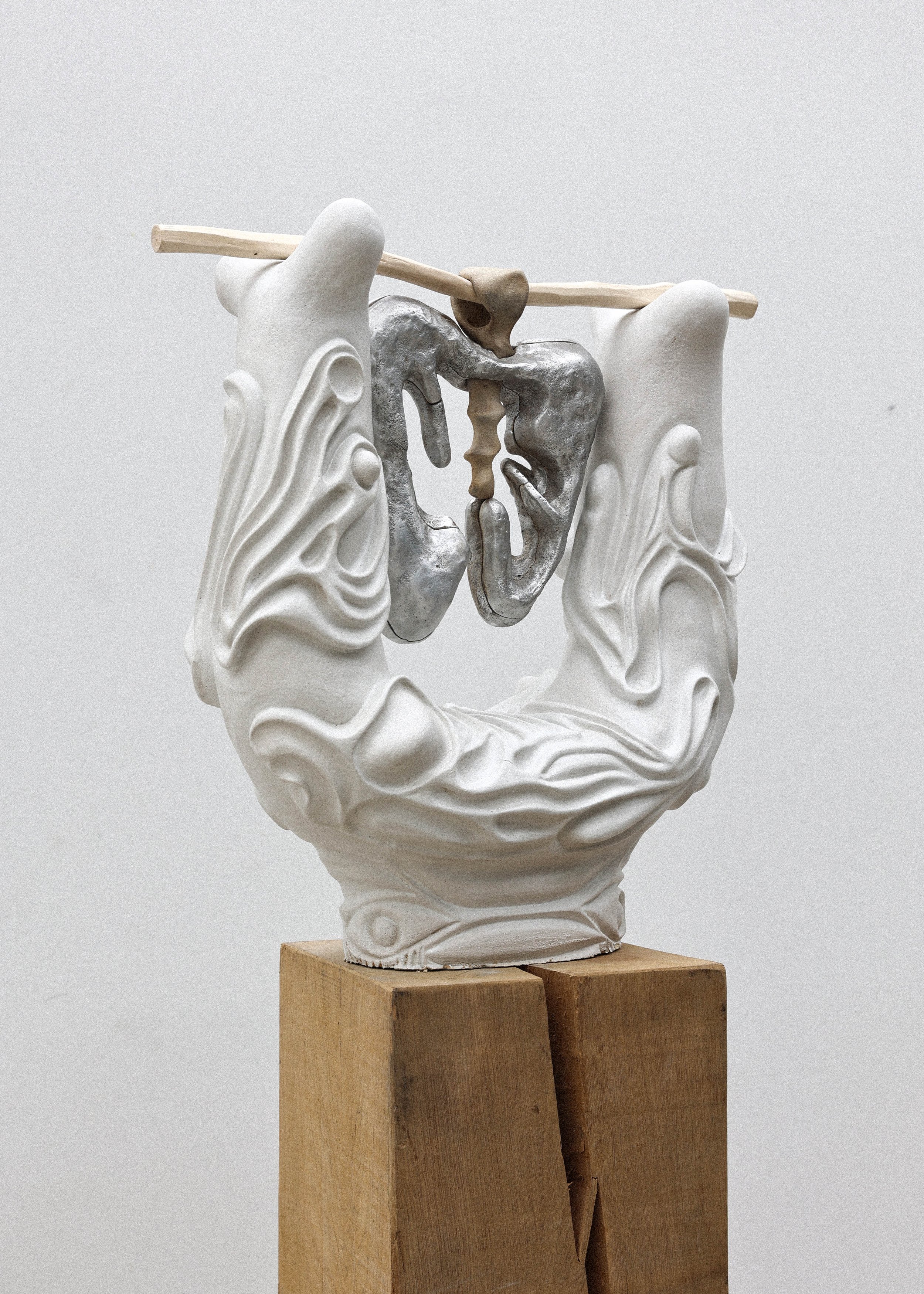
Sculpture titled Ramumas from the Gyvybes sklaida series
The Gyvybės sklaida series is an ode to stillness and contemplation, a state that leads to the gradual merging of the human body with its natural surroundings. My sculptures connect fragments of the body with organic elements to form a living whole.
Handcrafted sculpture in my studio in Toulouse, 2024.
Aluminum casting: Rokas Simkus
Photographed by: Egle Simkus
Photography assistant: Thomas Sareoua
Ramumas represents a pivotal step in the evolution of my artistic practice, where the integration of new techniques and an in-depth exploration of materials come together to create a work that is both intimate and universal.
Wood: A hazel branch, collected from the mountains, was chosen for its raw, organic texture. Sculpted by knife, it retains the natural traces of its growth, as well as the marks of handcrafting.
Métal: Made from aluminum cast in a sand mold, this lung symbolizes the vital breath that animates all forms of life. The contrast between the density of metal and the lightness of the breathing concept creates a subtle tension, highlighting the fragility and strength of life. The aluminum used for this piece is recycled, adding an ecological dimension and a direct link to the cycle of material transformation.
The lung is suspended by a stoneware piece designed to play a key role in the artwork’s overall structure.This stoneware element, both functional and symbolic, serves as an anchor point for the wooden branch, visually evoking the bones of a rib cage. It reinforces the idea of a symbiotic relationship between the human body and its natural environment, where each element is intrinsically connected to the other.
Clay: Handworked stoneware is used to create freeform shapes, symbolizing the deep, ancestral connection between humankind and the earth. To build the piece, I use the traditional coil technique, an ancient method that involves layering coils of clay to shape the structure. After a few days of drying, I begin to create relief on the surface, followed by another drying period. I then carefully carve the reliefs to accentuate contrasts between recesses and raised areas, subtly playing with the interaction of shadow and light.
The aesthetic of Ramumas is deeply rooted in natural references, with organic shapes inspired by the undulations of water and sand ripples. However, this work also has an ornamental dimension, drawing from Roman architecture, which evokes a dialogue between living nature and human-shaped structures, making it an artifact. This harmonious fusion of these two worlds creates a visual confrontation that invites the viewer to reflect on the relationship between civilization and nature.
The sculpted curves and raw textures interact, creating a contemplative space where each element carries the trace of its creation process, from the artisan’s hand to the influence of natural forces. Ramumas thus invites an immersion in the fragile harmony between humankind and its environment.










